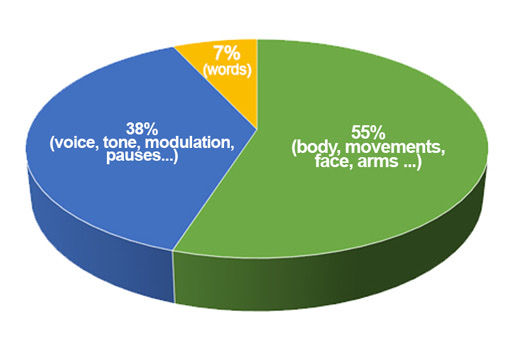Mastering Character Dialogue: Balancing Verbal and Nonverbal Communication
- khailareyno
- Apr 25, 2024
- 5 min read
Updated: Apr 28, 2024

Balancing verbal and nonverbal communication in screenwriting is a delicate art that requires careful consideration and attention to detail. Achieving this balance requires more than just words on a page; it demands a keen understanding of psychology, sociology, and storytelling.
Each nonverbal cue—whether a fleeting glance, a hesitant gesture, or a subtle shift in posture—must be carefully chosen and placed to enhance the narrative and reveal the inner workings of your characters. For example, the way a character brushes their hair behind their ear, the slight tremor in their voice, or the way they fidget with a pen can speak volumes about their state of mind.
In essence, balancing verbal and nonverbal communication in screenwriting is about creating a rich tapestry of human behaviour that draws the audience in and makes them feel a part of the story.
Here's a more detailed exploration of how you can achieve this balance:

Establish Character Traits
Establishing character traits is essential in screenwriting as it helps maintain consistency and authenticity in how characters communicate nonverbally and verbally. When characters have well-defined traits, their nonverbal cues, such as gestures and expressions, align with their personality, making their behaviour more believable and engaging for the audience.
These traits also add emotional depth to characters, allowing them to convey complex emotions through subtle actions. Additionally, character traits can create conflict and drive the plot forward, as clashes between nonverbal and verbal communication can lead to tension and misunderstandings that need to be resolved. Furthermore, character development is showcased through the balance of nonverbal and verbal communication, as changes in a character's behaviour over time reflect their growth and evolution throughout the story.
Here are some brief explanations of techniques to assist you in creating well-rounded characters:
Actions: Show the character in action, demonstrating their traits through what they do. For example, a character who is kind might help someone in need.
Dialogue: Use dialogue to reveal aspects of the character's personality. The way they speak, the words they use, and how they interact with others can all convey traits. For instance, a character who speaks assertively might be seen as confident.
Thoughts: Provide insights into the character's thoughts and feelings. This can help the audience understand their motivations and inner conflicts. For example, a character who thinks about their past mistakes might be seen as reflective.
Interactions: Show how the character interacts with others. This can reveal their social skills, empathy, and values. For instance, a character who is kind to everyone they meet might be seen as compassionate.
Reactions: Pay attention to how the character reacts to different situations. This can reveal their temperament and emotional responses. For example, a character who remains calm in stressful situations might be seen as composed.
Consistency: Ensure that the character's traits are consistent throughout the story. While characters can change and grow, their core traits should remain relatively stable to maintain believability.
Contrast: Use contrasting characters to highlight different traits. For example, a character who is brave might stand out more when contrasted with a character who is cowardly.
Symbolism: Use symbolism to reinforce character traits. For example, a character who is deceptive might be associated with the imagery of a snake.
Backstory: Provide backstory to explain the character's traits. Past experiences can shape who they are and why they behave in certain ways.
Character Arc: Allow the character to undergo a journey or transformation that reveals their traits.
Watch these additional videos for a more in-depth exploration:
How to Develop Characters \ Reedsy
How to Develop Characters \ Alexa Donne
Create Contrast
Creating contrast with verbal communication involves highlighting discrepancies between what a character says and what they truly feel. This technique can be achieved through various means, such as using irony, sarcasm, or understatement.
Irony is a powerful tool for creating contrast in verbal communication. In a scenario where the weather is gloomy, a character might ironically exclaim, "What a beautiful day!" This statement, on the surface, appears positive, but when juxtaposed with the context of a torrential downpour, it reveals the character's sarcasm and underlying dissatisfaction with the weather. This use of irony not only adds depth to the character but also creates a relatable and humorous moment for the audience.
Sarcasm allows characters to express their emotions in a more indirect and layered manner, often adding a touch of humour to their dialogue. For instance, when faced with a setback or an inconvenience, a character might sarcastically remark, "Oh, great, just what I needed." Although the statement may initially appear positive or neutral, the tone and context reveal the character's true feelings of frustration or annoyance. This contrast not only adds realism to the character but also makes them more relatable to the audience, as sarcasm is a common and recognizable form of expression in everyday life.
Understatement in dialogue can significantly enhance a character's complexity and resilience. By downplaying their emotions, the character not only showcases their ability to maintain composure in difficult circumstances but also invites the audience to read between the lines and identify the depth of their feelings. For example, in a scenario where a character encounters a challenging situation, they might understate their emotions by remarking, "It's not that bad." While this statement appears to minimize the severity of the situation, the context and delivery reveal the character's true feelings of concern or distress.
Consider Context
Incorporating nonverbal cues that align with the context of the scene and the character's background is essential for creating authentic and believable interactions.
For example, imagine a scene where a character is delivering a heartfelt apology. Their words may express remorse, but if their body language is closed-off or defensive, it can create a sense of insincerity. On the other hand, if the character's body language is open and their gestures are genuine, it can enhance the emotional impact of the apology and make it more believable.
Similarly, a character's cultural background can influence their nonverbal communication style. Different cultures have varying norms around personal space, eye contact, and physical touch, all of which can impact how a character expresses themselves nonverbally. For instance, a character from a more expressive culture may be more open with their feelings, displaying their emotions more prominently through gestures, facial expressions, and vocal tone. Their nonverbal cues might be more pronounced, such as animated gestures or a wide range of facial expressions, reflecting their cultural norm of expressing emotions openly.
Use Nonverbal Cues to Set the Tone
Use nonverbal cues to help set the tone of a scene, creating a sense of atmosphere and mood. These cues can create a subtle but powerful undercurrent of emotion that enhances the audience's understanding of the scene's context and intensifies its impact.
For example, imagine a scene set in a tense environment, such as a high-stakes negotiation or a confrontation between characters. Nonverbal cues like characters shifting nervously in their seats, avoiding eye contact, or clenching their fists can create a palpable sense of unease and anticipation. These cues can build tension and suspense, drawing the audience deeper into the scene and heightening their emotional investment in the outcome.
Avoid Overdoing It
While nonverbal cues can add depth and richness to a scene, it's important not to overdo it. Too many nonverbal cues can distract from the dialogue and make the scene feel cluttered.
Instead, nonverbal cues should be used sparingly and strategically to enhance the overall impact of the scene. They should complement the dialogue and action, adding nuance and subtlety without overpowering them.
Remember, it's important to recognize that people have different ways of expressing themselves fully. Understanding the situations that can lead to changes in body language, tone, and other nonverbal cues is essential. This awareness allows for more effective communication.


